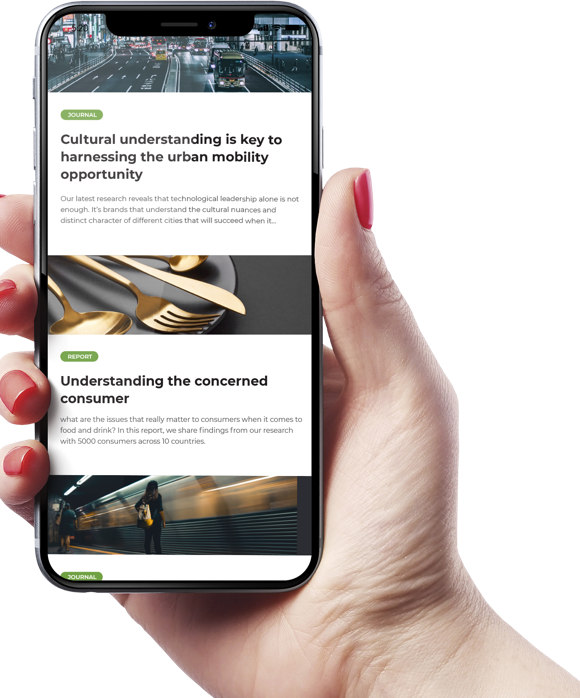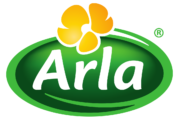Segmenting your market is incredibly important if you want to achieve success in any industry. It has many benefits, from improved marketing to making it easier to expand your offerings. FMCG (fast-moving consumer goods) are no exception. In fact, there are many reasons why market segmentation for FMCG products is sometimes even more important in this industry than others. There are many steps you can take to ensure your segmentation efforts are as effective as possible for your FMCG business.
First, it’s important to understand why segmentation is so important, and what makes FMCG different from some other industries. Then, we’ll move onto some key best practices for FMCG market segmentation.
Why is market segmentation important?
Whatever industry you’re in, it’s almost always helpful to segment your market into different slices based on a range of factors like needs, values, behaviors or interests. This has a wide range of benefits, such as:
- It helps you better target your audience. Instead of developing products for a broad range of people, you can hone in on a specific segment and create a product that addresses their pain points more effectively.
- It allows you to market more accurately and reliably. As above, when your target audience for marketing is more precisely defined, you can create marketing materials that speak to your prospects more directly, helping you build more meaningful relationships, engage them more easily, and increase your sales.
- It reduces risk and optimizes spending. When you (correctly) target a more specific group of people, you increase the chances of successfully converting them to customers. This allows you to use marketing budgets more wisely, focusing resources on people you know are in need of your product instead of taking a costly scattergun approach.
(Learn more about market segmentation in our ultimate guide to market segmentation)
Why is market segmentation important for FMCG products?
FMCG products can be defined as products that are sold quickly and at a relatively low cost. This bracket of goods includes things like snacks, toiletries, cosmetics, and over-the-counter drugs.
This category has certain characteristics that make segmentation a critical initiative for any FMCG business and will influence the approach you take to your segmentation.
- With FMCG goods, people’s needs and desires change — sometimes significantly — based on where they are and who they’re with. For example, someone eating out with friends might have very different preferences compared to when they’re eating at home after a long day of work. This means one person may fit into several segments depending on their environment. This kind of fluctuation doesn’t happen in the same way as many other product types, like cars or investment products. As such, an occasion-based segmentation is needed.
- FMCG is a high-competition space. Just think of the enormous numbers of potato chip brands, or toilet paper options. All these brands are fighting for customers all the time, and to compete in this kind of environment you need a keen understanding of your market and how to target it.
- Innovation is constant. To keep up in this ever-changing landscape, FMCG companies need to be continuously innovating and developing new products. Market segmentation helps them better understand their customers and where the innovation opportunities exist, as well as how their current products are being received by different segments of their market.

Get regular insights
Keep up to date with the latest insights from our research as well as all our company news in our free monthly newsletter.

Market segmentation for FMCG products — guiding principles on how to get it right
For FMCG businesses, market segmentation should use many of the best practices employed by other types of companies. Here are some ways to ensure you get the most out of market segmentation as an FMCG company.
Get the right people on board at the beginning
One of the biggest challenges when you’re running a segmentation in an FMCG organization is getting buy-in to the process from the key stakeholders. A segmentation should drive decisions at every level of a business – from marketing to product development – so it’s important to get these people on board at the outset to optimize eventual adoption of the segments.
One way of doing this is to carry out stakeholder interviews with the key people in your organization. This is important for several reasons:
- It allows you to gather important knowledge that exists in the business to inform the segmentation itself
- It helps create buy-in. By having skin in the game at the beginning, you are able to excite people about the project and create evangelists who will be more likely to harness the research going forwards.
Another useful tip is to consider a client side “champion” both for the duration of the research and the internal roll out. This should be combined with a client side “core team” with representatives from each of the departments that is planning on using the segmentation.
Remember that a person’s needs can change based on their environment, which will have implications for the way you approach segmentation in this category.
As mentioned above, one of the unique attributes of the FMCG category is that consumers’ needs change based on the situation. This means that with FMCG products, people don’t necessarily fit into fixed, static segments. As such, a lot of the time, segmentation is done based on occasions.
If we think about the alc-bev category, people tend to consume very different drinks depending on the occasion. Somebody having a beer with dinner on a Wednesday night will be motivated by a very different need than he/she will be when hanging out at a nightclub on Saturday, where they might be drinking something entirely different. Putting this person in one segment would wash out the findings, rather than accentuating the two very different motivations present in these occasions.
For this reason, when doing market research to inform a segmentation, it’s important to be specific about the what and why of the choices people make at different times. Ask them about a range of different scenarios to ensure their diverse needs are represented.
This is important to keep in mind for FMCG products since our habits and tastes fluctuate so much, in a way that they don’t always do with other products.
Identify the segments with most potential for your business
The core element of a segmentation project is the development of the segmentation solution, dividing the market up into segments that you can target. In this stage of the research, it’s important to remember that even though one of your segments might be a relatively small percentage of the market, it could account for a large share of sales. This is a vital principle to bear in mind in any category, but for FMCG it’s incredibly important, given how competitive the market can be. Focusing on a niche segment, by targeting consumers’ needs closely, can be a recipe for success.
Augment traditional segmentation techniques with (self) ethnographic research
Every segmentation involves quantitative research to group people into segments based on certain characteristics. This allows us to target groups with broadly similar attributes with the same types of product.
We always recommend combining this with qualitative research to get under the skin of your segments and to help you create detailed personas. This qualitative research can take many forms – from in-depth interviews to online research such as an online community.
For FMCG brands, we recommend considering ethnography at this stage. This gives you a unique and unmatched opportunity to really understand your segments— if you really want to get to know your Fitness Enthusiasts, for instance, you want to see them in the course of their daily life. What do they do after work? What does their house look like? What’s in their refrigerator?
Ethnography gives you a level of insight that you can’t quite access with surveys. Doing this in person is incredibly rich, but it can be logistically challenging (particularly during Covid) and costly so it isn’t always possible to take advantage of this method. That said, there are a range of self-ethnographic techniques you can use to gain this depth of insight through mobile research. Examples include asking people to create a food diary, complete videos or photo tasks in store to help you understand the purchase journey or interview friends or family members.
The insights from self-ethnography can be incredibly rich, helping you to really deepen your understanding of your segments so you can develop products, services and campaigns that really meet their needs.
Bring your segments to life
Once you’ve created your segments, the next task is to bring them to life. There are a number of ways you can do this but the first step is to create personas.
What is a persona? A persona is a fictional profile that encapsulates the core qualities of each segment, including their needs, behaviors and motivations. The purpose of a persona is to help others in the business understand each segment and how they differ from one another so they can better serve their needs. As such, they tend to be very visual so they can be easily remembered and placed at the forefront of decision making.
Naming here is of vital importance. A memorable name can be really useful in helping stakeholders remember the defining characteristics of a segment so that they live on in the organization.
Some personas can be as simple as a PowerPoint slide. But at Kadence, we like to take this further, developing a range of visual outputs that you can use to help everyone in the business understand your core targets – from the C suite to the factory floor.
We’ve developed everything from interactive PDFs to infographics to bring different segments to life. Some techniques we’ve found particularly useful include:
- Video-based teaser campaigns prior to unveiling the different personas to build interest and engagement
- Posters to bring personas front and center for employees in the office
- Documentary-style films with consumers representing each segment. These can be a really effective way of bringing the segmentation to life and helping the key insights stick with stakeholders for a long time to come
(You can find out more about our design team and their capabilities).

Going global – how to approach international segmentations
Most FMCG brands are global, but their products can and do vary depending on where they are sold. As such, marketers often ask us if they should have one global segmentation solution or individual solutions by region or country.
The answer really lies in how you will use it. If you have marketing teams that are deployed at a country level, then country level is the way to go, with, hopefully, a global framework that the countries all fall into that the global marketing team can use.
If most of the marketing action is coming from a single global team, then one global segmentation is better so it really does depend on the set up of your organization and team.
Need help developing a market segmentation for FMCG products in your business?
Market segmentation in the FMCG space is a powerful way to dig into your market, better understand your customers, create better products, and get buy-in from leadership for your plans.
It’s crucial to do this right. There are many challenges and potential pitfalls to navigate, but a huge potential upside in an industry where competition is fierce and customer expectations are high.
For best results, it helps to work with the experts. To find out how Kadence can help with market segmentation for FMCG, read more about our segmentation capabilities, our work in FMCG or get in touch with us today.
.



 Senior Marketing Executive
Senior Marketing Executive Sales & Marketing
Sales & Marketing General Manager PR -Internal Communications & Government Affairs
General Manager PR -Internal Communications & Government Affairs Vital Strategies
Vital Strategies
 Customer Intelligence Director
Customer Intelligence Director